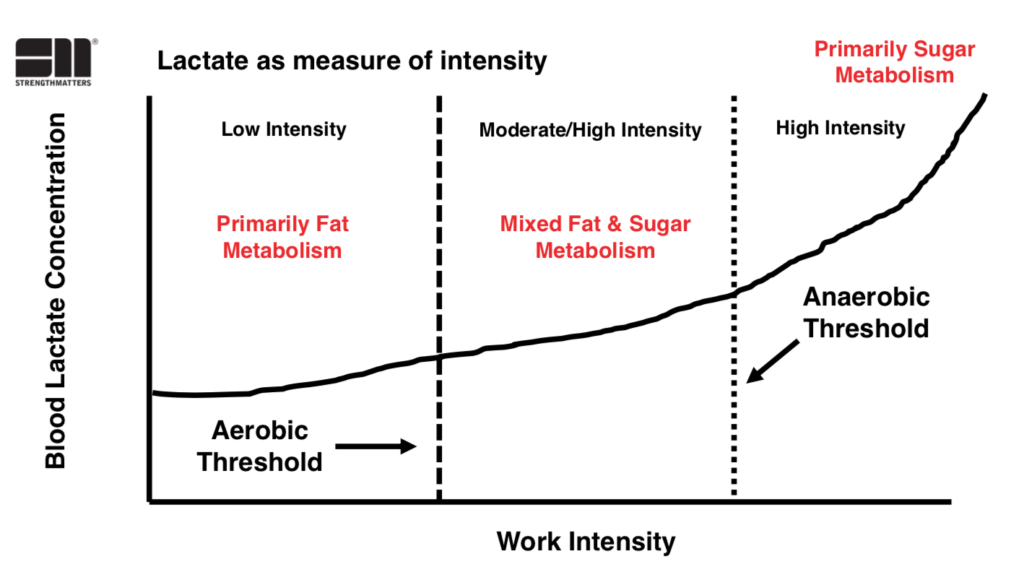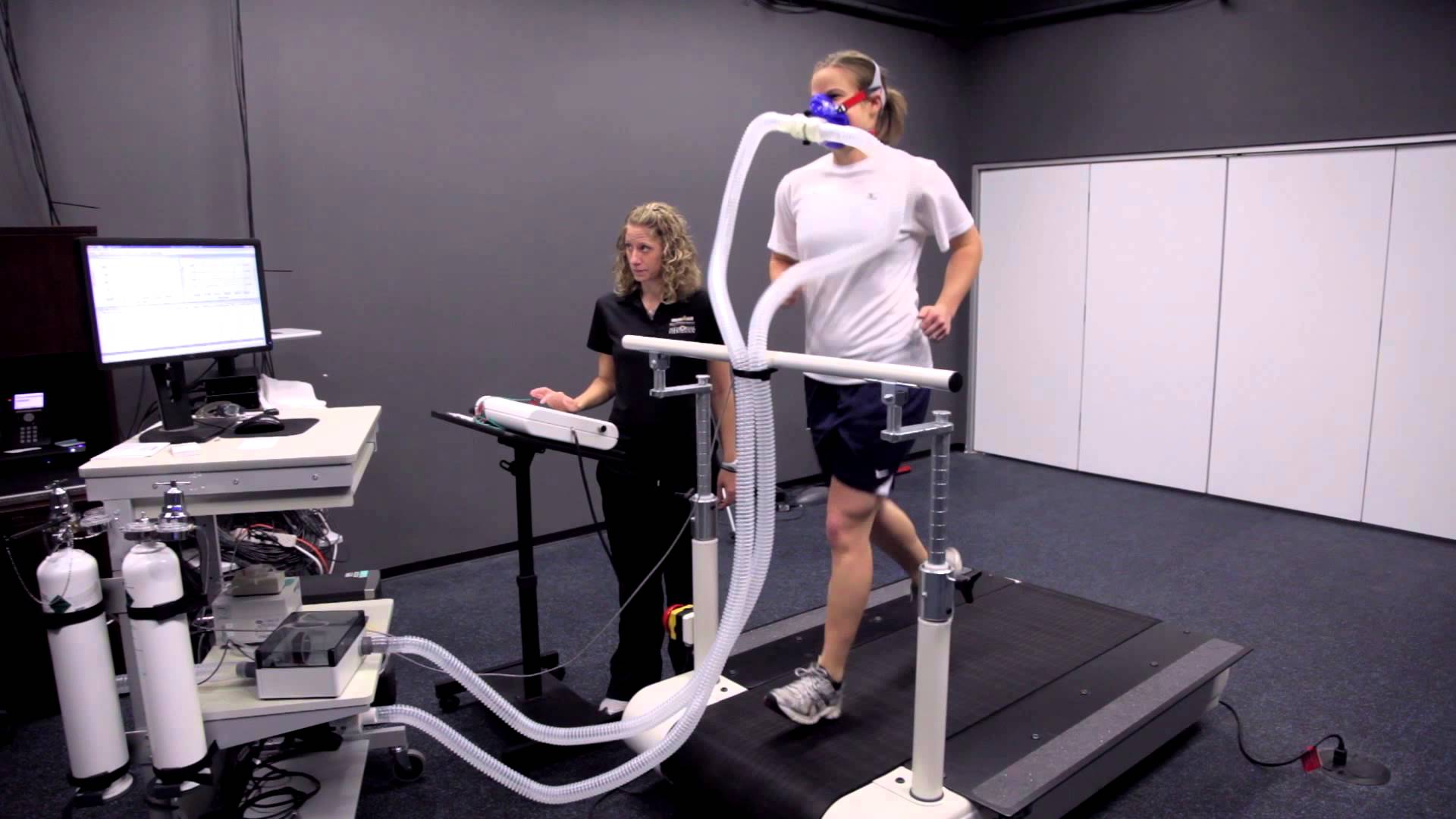Training thresholds refer to the level of intensity needed in order to stress the body enough to cause an adaptation or improvement in performance. Training thresholds are identified by measuring when lactate begins to rise above resting levels and when they pass the lactate inflection point (when lactate concentration begins to increase rapidly). These are often then converted to measurements of intensity and can be either a % MHR or % VO2max. %MHR is used most frequently so will be the focus here. There are generally two training thresholds: the aerobic threshold and the anaerobic threshold.
The aerobic threshold is the intensity needed in order to produce an adaptation that will improve someone’s aerobic capacity or VO2max. The aerobic training threshold is normally between 65% and 70% MHR and is defined as the point at which lactate begins to rise in the blood above normal resting levels.
The anaerobic threshold is the intensity needed in order to produce an adaptation that will improve someone’s anaerobic capacity, normally by increasing the bodies ability to break down and remove lactic acid. The anaerobic training threshold is normally between 80% and 85% MHR and is also known as the lactate inflection point – where blood lactate levels begin to rise rapidly because your body cannot remove it as fast as it is being produced.
The intensities between the two thresholds are called the aerobic training zone and include the intensities that should be trained at in order to improve aerobic performance. The higher the training intensity within this zone the greater the adaptations. This is the same for the intensities above the anaerobic training threshold, these are called the anaerobic training zone and the higher the intensity the greater the gains. In fact, there is now plenty of evidence suggesting that you will have greater increases in aerobic capacity if you combine both aerobic training and anaerobic training, because you want to increase the workload for your lactate inflection point. See [2]

Resistance training usually uses repetition maximum to speak about the intensity being used. Within resistance training there are a number of goals that can be achieved and the threshold required varies depending on the goal. Studies suggest that the best maximal strength and power gains can be made using 1-6RM. Training between 8-12RM has been shown to produce significant increases in strength and is the most effective intensity in order to produce muscular hypertrophy. Training between 12-15RM is the best range to significantly improve local muscular endurance. All of this resistance training develops the anaerobic systems, with the higher intensities developing the alactacid system and the lower intensities developing the lactic acid system, though these are not completely isolated from one another. Higher RMs has been shown to be negligible.[1]
Go deeper by reading this article I wrote
References
[1] Fleck, S. J. and Kraemer, W. J. Designing Resistance Training Programs (3rd Edition) Lower Mitcham, Human Kinetics, p. 167.
[2] Intervals, Thresholds, and Long Slow Distance: the Role of Intensity and Duration in Endurance Training research article
See also
MAXIMISING FUNCTIONAL CAPACITY: DELAY YOUR LACTATE INFLECTION POINT
Threshold Confusion: Aerobic, Anaerobic, Lactate, Functional – Help!
Aerobic Threshold for Exercise Prescription research article
The anaerobic threshold: 50+ years of controversy research article
Comparison of two methods for aerobic threshold determination research article
Updated 4/2022

